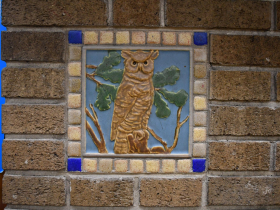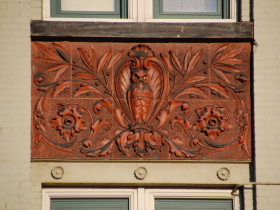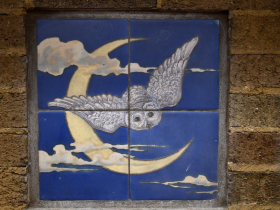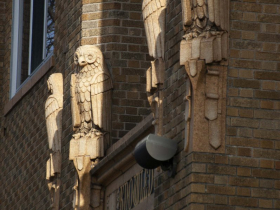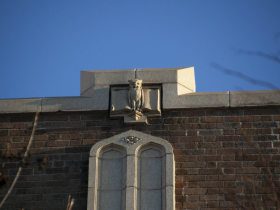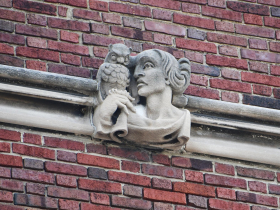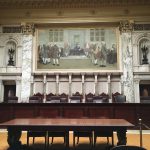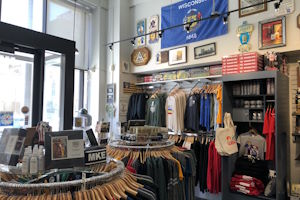Ornamental Owls are Mentors in Milwaukee’s Schools
Long before smartboards and AI, Milwaukee’s schools carried lessons of wisdom and virtue in the very walls that held them.
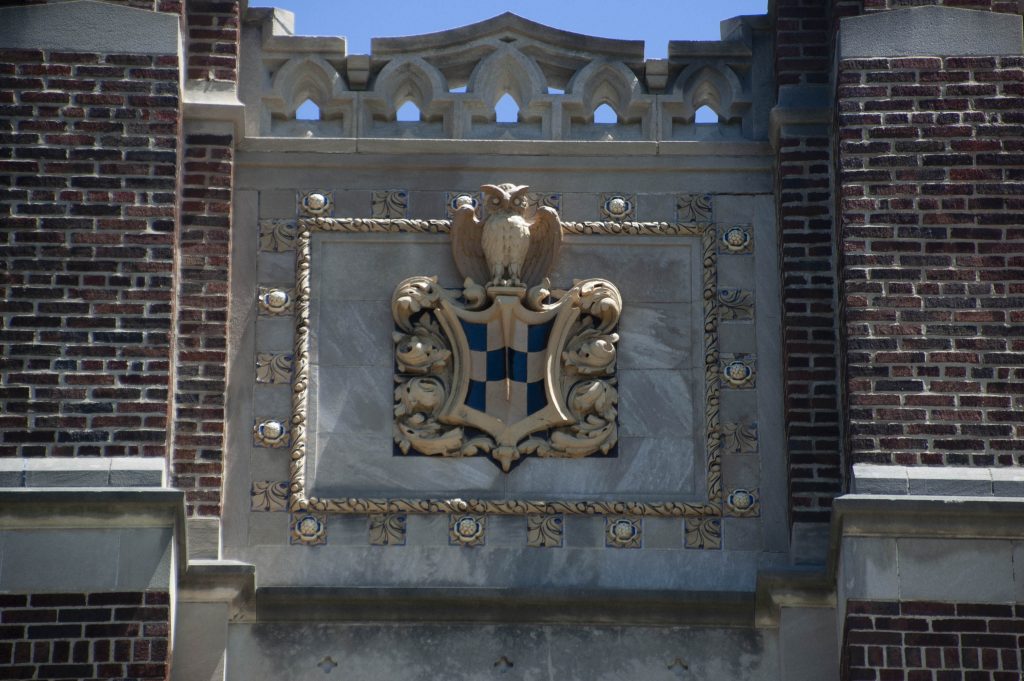
Owls modeled in glazed architectural terra cotta appear on Neeskara Elementary, built in the mid-1920s. Photo by Ben Tyjeski.
Milwaukee schools in the early 1900s were among the most modern facilities in their neighborhoods. Both in structural integrity and artistic taste, Neeskara, Rufus King and Messmer High were just a few schools that elevated quality education through their impressive buildings. Their craft was so elaborate that young scholars could even read lessons carved into the walls.
Today, a quarter into the 21st century, the city’s schools are struggling with budget challenges, lead abatement issues and declining enrollment. Across the state, districts have been selling old buildings, allowing them to be used by private schools, redeveloped as apartments or demolished altogether.
In these cases, districts can build new facilities. They are often sleek and bright, with large panes of glass, bigger classrooms and fresh paint. But in starting over, they lose something their predecessors had: character.
Character is not just the decorative charm of an old building, but also the way a structure can nurture moral development within a person.
Striving to nurture and inspire the whole child through architecture has become a lost art.
In Milwaukee, the owl motif was one tool architects once used to develop character in their school designs.
The majestic, winged owl served as a symbol of learning and wisdom, though there are no plaques or engravings to explain that meaning. One must take notice and discover it for themselves.
Owl decorations appeared in Milwaukee schools built between approximately 1890 to 1940. They were carved in stone, modeled in terra cotta or illustrated on ceramic tiles. Most appear outside—near parapets or above front doors—while others are tucked away in kindergarten classrooms, decorating fireplaces with their watchful gaze.
The owl as an architectural motif originates from classical antiquity, where it is associated with the Greek goddess of wisdom, Athena. One of her epithets, Glaukopis, means “owl-eyed” or “bright-eyed.”
Owls, spectators of the night, are patient creatures, perched on branches as they study their surroundings before acting. That restraint and strategic thinking mirror the ideals Athena represented. In mythology, she sought careful decision-making guided by moral clarity—flawed, perhaps, but always striving for improved outcomes.
The owls on Milwaukee’s schools do not tell her stories literally, nor do they need to. They serve as symbols, inviting curious students to explore their meaning, and providing teachers with opportunities to transform them into lessons in reflection and growth. Each interpretation is personal.
Athena’s tales—accidentally slaying her friend Pallas or humiliating Arachne for her weaving skill—remind us that we may not always like our own actions, but we can reflect on them, repair harm and restore honor. Her guidance of heroes such as Odysseus, Perseus and Bellerophon underscores that success requires not just diligence but wise counsel. Teachers and coaches may take comfort in that idea.
The connection between Athena and the owls also evokes the “teacher’s voice” that lingers in one’s mind. How a lesson or a bit of encouragement shapes a student’s life is rarely known, but when one perseveres as an adult and strives to achieve something great, that voice returns.
Thus, the owl on a school building reminds children that guidance can always be found, especially if they seek it. It also reminds educators of their role in mentoring students and providing lessons that help them rise from challenges and grow.
Architects such as Van Ryn & DeGelleke and Guy Wiley were not alone in using owls in their school designs. But with each new referendum and round of budget cuts, bulldozers across the state are coming—and what was once common becomes treasure.
When children are left to learn on screens, whether virtually or in classrooms, there is less space to notice the treasure around them. Detachment from real-life learning grows. The owls remain, collecting dust, while new, high-tech facilities rise to accommodate an era of artificial intelligence.
Milwaukee’s schools, however, remain unique. They are not relics stuck in the past; history is alive in them. Many have undergone additions, remodels and updates that require continual maintenance, as all facilities do. But the key is that these schools are not being torn down. They are evolving. Natural areas are being integrated into school grounds, and colorful, active spaces of learning are taking shape. If this work continues, Milwaukee schools can grow with integrity—and with character.
In this ongoing endeavor, it is crucial that the community recognize the value of what it has and remain connected to what the owl represents: a willingness to lend a hand, share knowledge and help things grow.
Owl Motif
Ben Tyjeski dedicates this article to his colleagues at MPS Garland School. He is also co-author of Carl Bergmans and the Continental Faience & Tile Co., available at UrbanMKE Store.
If you think stories like this are important, become a member of Urban Milwaukee and help support real, independent journalism. Plus you get some cool added benefits.
Tile Town
-
Handmade Tiles Found in 101 Milwaukee Apartment Buildings
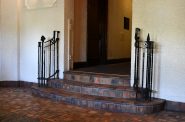 Aug 4th, 2025 by Ben Tyjeski
Aug 4th, 2025 by Ben Tyjeski
-
Secret Garden Unveils Classic Batchelder Fountain
 Aug 28th, 2024 by Ben Tyjeski
Aug 28th, 2024 by Ben Tyjeski
-
Washington High School’s Tiled Bubblers Are Unique
 Apr 23rd, 2024 by Ben Tyjeski
Apr 23rd, 2024 by Ben Tyjeski


